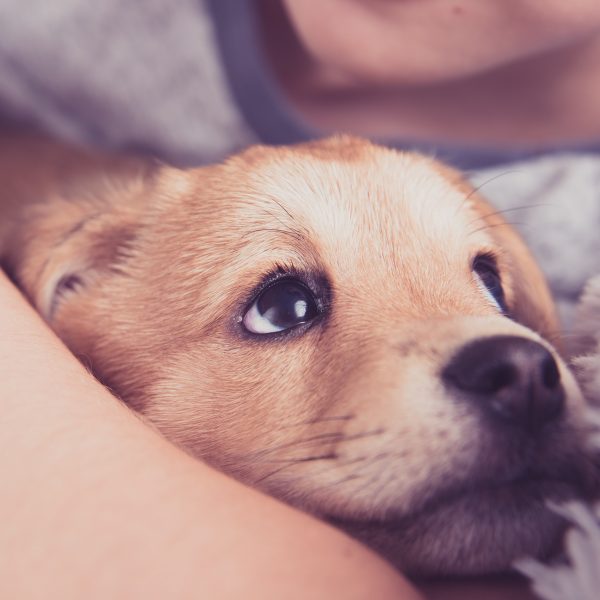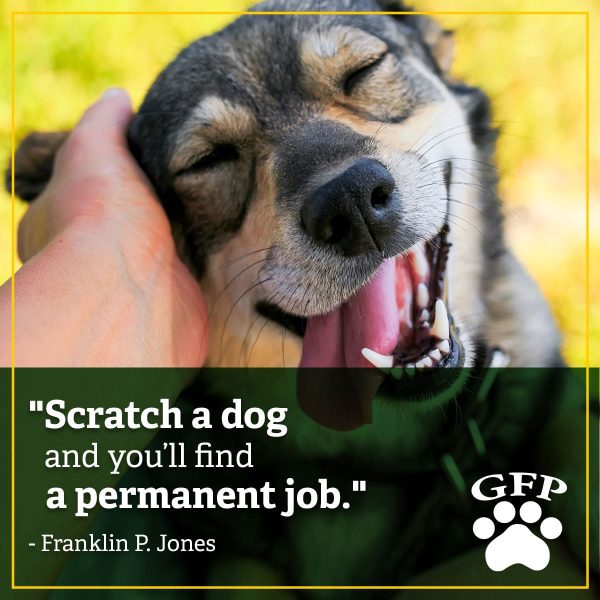How to Build a Bond With Your Dog

Adding a new puppy to your family is an exciting time for you and your new pup. A lot of things happen in your dog’s first few months with you, like training, socialization, and, of course, bonding with you. Here are a few ways to build a bond with your dog:
1. Create a Welcoming Space
Although you may be beyond the moon when bringing your new puppy home, the experience can be scary and overwhelming for your puppy. They will be surrounded by a completely new environment full of new smells and people.
It’s important that you puppy-proof your home and make your home a welcoming space before you bring your new puppy into it. Keeping things calm and quiet will help your puppy remain relaxed and acclimated to their new situation. This will also help keep the environment peaceful and help them bond with you easier.
You can create a safe space by putting your puppy’s things, like bedding, toys, and food in one place. Make sure it’s in a part of the home the family uses regularly. The more your puppy sees and is able to interact with you and other family members, the better, and more comfortable they will become.
You can also use baby gates and other temporary barriers to confine your new puppy to a few rooms in your home to help them relax and keep them from getting overwhelmed by having too much space.
2. Keep Training Positive
It’s important to start training your puppy early. With rewards and a focus on keeping training sessions positive, training can also become a bonding time for you and your pup. Strengthening the bond you have with your puppy is one of many benefits of puppy training classes.
They can also help you when it comes to keeping training consistent and positive. You can also pick up some good tips from several of the best YouTube channels for dog lovers. If you prefer more personalized, one-on-one support, you can always find an experienced dog trainer to help.
Use Gentle Tones and Positive Reinforcement
Using a gentle tone and positive reinforcement lets your puppy know they can trust you, builds a relationship with them, and encourages the development of good behavior. A firm “no” paired with a short time of ignoring your puppy for unwanted behavior and an excited, happy tone paired with pets or treats for desired behavior keeps training positive and effective.
Be Aware of What Behavior You Are Encouraging
It’s also important to think about what behavior you may be accidentally training your puppy to do. It may be tempting to use your hands during play, but it’s usually not a good idea, especially if you are trying to train your puppy to stop biting.
Hand-mouthing may be adorable when your puppy is young. However, it’s generally not so cute when they are a full-grown dog. A similar situation usually applies to barking, howling, or jumping up.
Training is a never-ending activity and should continue throughout your dog’s life. As you’re bonding and interacting with your puppy, consider whether you will still want your puppy to exhibit that same behavior once they are bigger. This is also a good opportunity to set boundaries for your puppy as well.
Keep Expectations and Reactions Consistent
Mixed messages are confusing for your puppy. Not only is this one of the top ways you’re confusing your dog, but it also often makes bonding more difficult and tends to lead to bad behavior. Consistent rules and boundaries help your puppy understand what to expect and keep them from developing bad habits while also strengthening your relationship.
3. Spend Time Together
One of the best ways to bond with your new puppy is to spend time together and share positive experiences. This is how dogs choose their favorite person and is a great way to start building a strong bond with a new puppy.
Physical Touch
Touch is important in building a bond with your dog so things like grooming or petting are good ways to build that bond. Even though dogs don’t always enjoy hugs, there are ways dogs show love.
Things like leaning, snuggling, or asking for pets are just a few ways dogs show love. Of course, every dog is different, and not every dog is a Velcro dog. If your dog seems to dislike physical touch, let them ask for affection on their terms.
If you get your puppy used to it early on and reward them, regular grooming and care can become a positive experience regardless of their dog coat type. This also makes it so much easier to groom your pup as they grow. Plus, regular brushing can help control dog shedding, or at least keep more loose fur contained to the brush instead of around your house!

Give Attention
Make sure your dog is receiving plenty of attention. If they want to sit with you or lay at your feet while you read or watch TV, this can help build a bond with them. Even playing a low-key game while you do something else will help foster a bond. You can even try some dog-friendly yoga poses if you think your dog would enjoy it.
Eye contact is also really important when it comes to building a bond with your dog. Eye contact can be a sign of trust and love and releases a hormone called oxytocin. This hormone encourages bonding. Eye contact and other behaviors can signify trust and comfort, and are signs your dog has imprinted on you.
Playtime
Playtime is also a great way to bond with your puppy and give them some exercise. Plus, playing with your pup makes them more comfortable around you while also strengthening your bond with them and giving them a chance to get rid of some excess energy. A lot of dogs love squeaky toys. If your dog does, set aside some time to play with them and continue to build a positive bond.
After playtime, your puppy will likely be ready for a nap and some relaxation. This is a great opportunity to spend some time cuddling or lounging around together. Once your puppy has been vaccinated, you can start spending time in public places. This gives you the opportunity to introduce your puppy to a ton of different experiences and people to socialize them. Plus, they’ll love the chance to spend time doing fun things with you.
4. Learn to Communicate
Communication is important in every relationship and your relationship with your dog is no exception. Be sure to be as clear as possible when communicating with your dog. If your dog isn’t listening to you, they might be receiving mixed signals or are too wound up.
Try using visual cues along with verbal commands. Dogs pick up visual cues faster since they pay attention to your body language and what you do much more than they listen to your words. Communicating this way will help develop a stronger bond since your dog will understand what you want from them.
5. Stick to a Schedule
Dogs thrive on schedules so it’s important to create a good daily routine for your dog. Sticking to a schedule reassures your dog they know what’s coming next. If they know that they go out to the bathroom and then have breakfast when you wake up, they’re much less likely to be anxious in the morning.
Consistent routines are helpful for keeping your dog comfortable and content. Knowing what happens next alleviates stress for your dog and helps them know they can count on you. This again helps build a strong bond between you and your dog. It can also help you get used to a new routine and help combat the “puppy blues“.
These are just a few ways to build a bond with your dog. It’s important to bond with your new puppy and create a healthy, trusting, and loving relationship with them. A well-trained, socialized puppy will grow into a well-behaved, friendly dog that will provide you with plenty of love and laughter throughout their life.
